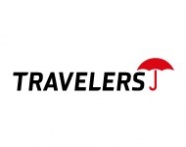Getting the schemes pitch right

The best ways to build a lasting partnership
Schemes are a win for insurer and broker alike. They help insurers access new markets and distribution as well as tapping into brokers’ market- and segment-specific expertise. Schemes allow brokers to demonstrate deeper expertise about a sector and offer a proposition tailored to client needs – all at a time when options for cover can be more expensive and limited.
All of that begins with the right pitch. Brokers set themselves up for success by researching their idea from multiple angles, presenting it professionally, and anticipating challenges.
“We love to see that the brokers have done their homework,” said Jonathan Forster, SME Distribution Director at Travelers Europe. “They should know about the sector, the size and value of the market, how many companies there are and by size, what changes are happening in the sector, and the budget they have for marketing and development. Insurers want to partner with experts and brokers that have built up some experience in the sector or who plan to invest in it, for example, by bringing in new staff who have the necessary knowledge and capabilities.”
The best pitches support those elements with realistic figures. Brokers should ideally have their own numbers or prospective numbers about a scheme’s performance and market potential – and provide commentary about why performance is what it is. Trade associations, marketing experts and other specialists can provide additional data, as well as context about a scheme’s position and potential in the market.
Schemes draw on the strengths of the partners involved, so a schemes pitch should identify how an insurer can provide support. It helps when brokers understand what they’re seeking in an insurance product and mention unique coverages that should be included.
That requires research up front, so starting the process early is important. “If a broker is serious about either moving a scheme or developing a new idea, they should approach an insurer 6-8 months in advance, so they have time to engage with a few insurers,” Forster said. “This gives us reassurance that they are looking for a provider they can work with over a period of time.”
Bright ideas
Scheme ideas fall into three categories – existing schemes, portfolio consolidations and new schemes. Knowing the nuances of each can help a broker prepare a more focused pitch.
An existing scheme has typically been with another carrier for several years, but the broker now wants to move it to a new carrier. A range of scenarios could trigger the desire to move: a decline in profitability, differences of opinion about the future of the scheme, poor service from the carrier, or an increase in insurance prices. Because moving and setting up a scheme with a new insurer can be costly, a broker should be prepared to discuss how having a new carrier would improve their situation. According to Forster, “It’s important to be open and honest about what is making you leave your insurer – and demonstrate why you believe this new partnership would be the best way forward.”
A portfolio consolidation scheme presents an opportunity to expand a strong but small book of business within a sector. Perhaps a broker with 30 clients in the auto repair business wants to triple their number of client shops. Forster notes, “They may already have an account executive who has a lot of expertise about the sector, so they understand the market, and now they want to recruit an additional person and become part of a trade association.” Finding a new carrier can help support their desired growth.
Finally, a broker may approach an insurer with a new scheme idea. Here, it’s important for the broker to paint a realistic picture of the prospects for the scheme. Presenting related historical data helps, but even in the absence of it, a broker can consult experts and trade associations to better understand the viability of the idea. Without that due diligence, a broker may underestimate the costs of developing an idea and overestimate the likely market response – a red flag for an insurer screening a new concept.
Finding the right fit
The best schemes elevate the complementary strengths of those involved. So, while it helps the broker to have a clear, well-researched end result in mind for their scheme, it’s also important to be willing to be flexible about its implementation. The stronger the pitch, the more willing an insurer will be to volunteer its resources to fine-tune a promising concept.
“We have expertise here to help support and shape the plan with the broker,” Forster comments. “That includes reviewing the wordings, designing the product, identifying the right coverages, and talking about marketing. By being open to that, they give us an indication they want to invest in a long-term partnership – and that is good for everyone involved.”
CLICK HERE to find out more about Travelers Schemes
Authored by Travelers
About Travelers
We wrote the first auto insurance, the first aircraft liability insurance, and even the first personal accident cover for astronauts.
In today’s fast-changing world, this heritage of adventure really counts. With an extended network of underwriting, claims management, and industry experts in 125 countries, we’re here to insure your clients’ ambitions – no matter their size and scope. Our expertise and experience deliver policies that help them continue their journey.
With businesses facing ever more emerging and evolving issues, our suite of insurance products offers bespoke cover for each risk, and our commitment to genuine, caring partnerships means we’ll always be there to advise and support our clients and our broker partners, – whatever the future holds.
The Travelers Companies, Inc. (“TRV”) is a leading provider of property liability insurance for motor, home and business. The Group has more than 30,000 employees and operations in the United States, Canada, UK and Ireland.
The group has total assets of approximately $110 billion, shareholders’ equity of $26 billion and total revenue of $32 billion, as of December 31, 2019. Our European based operations offer our customers a wide range of coverage through Travelers Insurance Company Limited, Travelers Syndicate Management Limited (Syndicate 5000 at Lloyd’s), Travelers Underwriting Agency Limited and Travelers Insurance Designated Activity Company.

